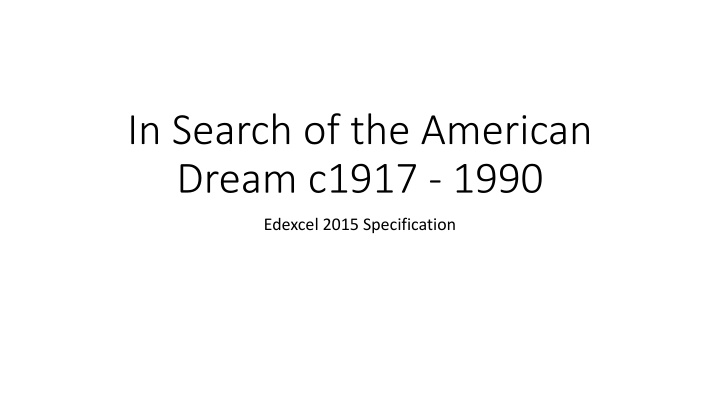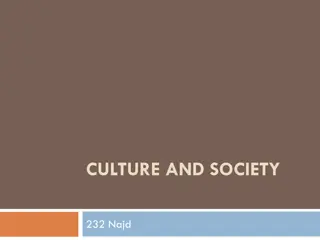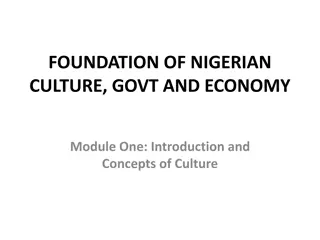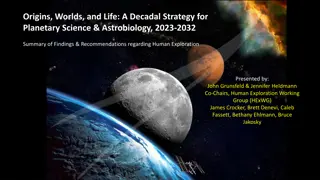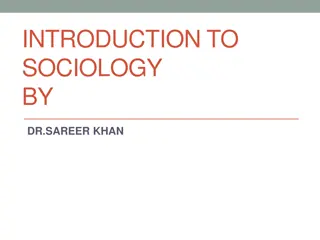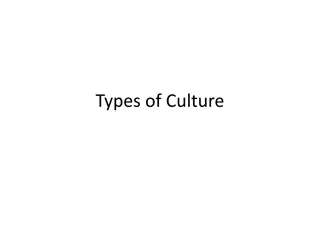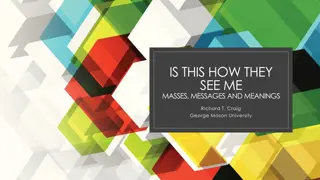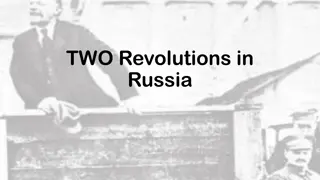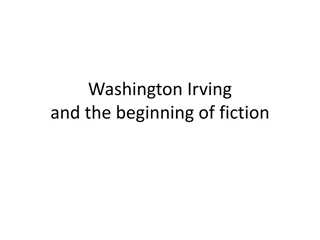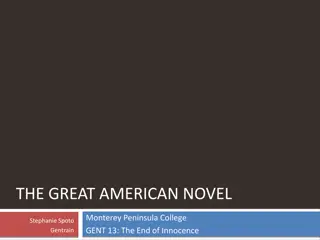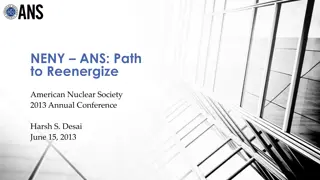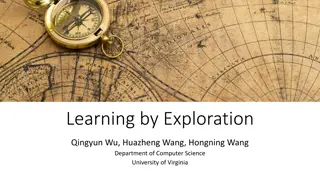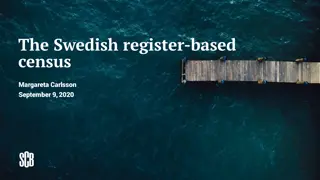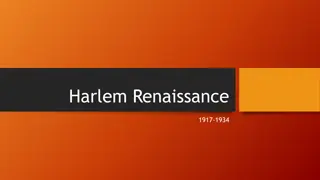Exploration of the Evolution of American Society and Culture, 1917-1990
Delve into the multifaceted facets of American society and culture from 1917 to 1990 with a deep dive into the changing roles of women, political landscape shifts, influences of immigration, impact of wars on domestic politics, economic influences, quest for civil rights, changing living standards, pursuit of minority rights, and the development of leisure and travel. This panoramic view encompasses significant historical events and societal transformations that shaped the American Dream during this period.
Download Presentation

Please find below an Image/Link to download the presentation.
The content on the website is provided AS IS for your information and personal use only. It may not be sold, licensed, or shared on other websites without obtaining consent from the author.If you encounter any issues during the download, it is possible that the publisher has removed the file from their server.
You are allowed to download the files provided on this website for personal or commercial use, subject to the condition that they are used lawfully. All files are the property of their respective owners.
The content on the website is provided AS IS for your information and personal use only. It may not be sold, licensed, or shared on other websites without obtaining consent from the author.
E N D
Presentation Transcript
In Search of the American Dream c1917 - 1990 Edexcel 2015 Specification
Specification in Bullet Points 3 Society and culture in change, 1917 80 3.1 The changing position of women, 1917 80: 3.1.1 impact of the Roaring Twenties, Great Depression and New Deal on women; 3.1.2 impact of the Second World War and suburban life, 1941 60; 3.1.3 emergence of the women s liberation movement and its achievements; 3.1.4 extent of women s advancement, 1961 80. 1 The changing political environment, 1917 80 1.1 A changing presidency: 1.1.1 the rise and decline of Republicanism to 1933; 1.1.2 the influence of Roosevelt; 1.1.3 changing styles of presidential leadership, 1945 72; 1.1.4 a decline in confidence, 1968 80. 3.2 The impact of immigration 1917 80: 3.2.1 the nature of, and response to, immigration in the 1920s; 3.2.2 the impact on urban life, 1919 41; 3.2.3 the impact of the Second World War, government policy and its consequences, 1941 80. 1.2 Influences on the political landscape: 1.2.1 from rugged individualism to New Deal ideas in the 1920s and 30s; 1.2.2 the Red Scares and anti-communism, 1917 80; 1.2.3 liberalism, counter-culture and the conservative reaction, c1960 80. 3.3 The influence of popular culture and news media: 3.3..1 the social impact of cinema, popular music and radio, 1917 50; 3.3.2 the social impact of television from the 1950s; 3.3.3 the influence of broadcast news, 1920 80. 1.3 The impact of war on domestic politics: 1.3.1 the reasons for a return to normalcy and a commitment to isolationism, 1917 41; 1.3.2 US emergence as a Cold War superpower from 1941; 1.3.3 the impact of involvement in Korea and Vietnam 4 The changing quality of life, 1917 80 4.1 Economic influences: 4.1.1 impact of boom, bust and recovery, 1917 41; 4.1.2 the impact of the Second World War, post-war affluence and growth, 1941 69; 4.1.3 the challenges of the 1970s. 2 The quest for civil rights, 1917 80 2.1 Black American civil rights, c1917 55: 2.1.1 life in the South and the impact of northern migration, 1917 32; 2.1.2 the impact of the New Deal, the Second World War and the Truman presidency; 2.1.3 from legal challenge to direct action, 1917 55. 4.2 Changing living standards: 4.2.1 fluctuations in the standard of living, 1917 41; 4.2.2 the impact of the Second World War and the growth of a consumer society, 1941 60; 4.2.3 living standards, 1961 80, including the impact of anti-poverty policies and economic divisions. 2.2 Black American civil rights, c1955 80: 2.2.1 changing patterns and approaches, 1955 68, including southern-based campaigning, the emergence of Black Power and King s northern strategy; 2.2.2 the impact of civil rights legislation: achievements and limits to success, 1955 80. 4.3 Leisure and travel: 4.3.1 the reasons for, and the impact of, increased leisure time, 1917 80; 4.3.2 the growth of spectator sports; 4.3.3 the development, and influence, of a car-owning culture and improved air travel. 2.3 The search for minority rights, 1960 80: 2.3.1 the reasons for, and nature of, Native American and Hispanic American campaigns; 2.3.2 the emergence of the gay rights movement; 2.3.3 achievements, and limits to success, of minority campaigns
Decline 1.1.3 changing styles of presidential leadership, 1945 72; Rise 1.1.1 Republicanism to 1933; 1.1 A changing presidency: 1.1.4 a decline in confidence, 1968 80. 1.1.2 the influence of Roosevelt; 1 The changing political environment, 1917 80 1920s Rugged Individualism Reasons for a return to normalcy 1.3.1 Aftermath of WW1 1917 41; 1.2 Influences on the political landscape: 1.3 The impact of war on domestic politics: 1.2.1 Economic Ideas Commitment to isolationism 1930s New Deal 1.2.2 the Red Scares and anti-communism, 1917 80; 1.3.3 Fighting the Cold War 1.2.3 Social ideas c1960 80. 1.3.2 US emergence as a Cold War superpower from 1941 - 1950; Conservative reaction, liberalism Vietnam and its impact Korea and its impact Counter-culture
the Second World War Impact of northern migration Legal challenges the Truman presidency impact of the New Deal 2.1.2 1933 1953; 2.1.3 Changing tactics, 1917 55. 2.1.1 Life for African Americans, 1917 32; 2.1 Black American civil rights, c1917 55: To direct action life in the South 2 The quest for civil rights, 1917 80 King s northern strategy Southern-based campaigning 2.2 Black American civil rights, c1955 80: 2.3 The search for minority rights, 1960 80: 2.2.1 changing patterns and approaches 1955 68 2.3.1 Hispanic American campaign 2.3.1 Native American Campaign Emergence of Black Power Reasons for Nature of the campaign Nature of the campaign Reasons for 2.2.2 the impact of civil rights legislation, 1955 80. 2.3.3 minority campaigns Limits to success 2.3.2 the emergence of the gay rights movement; Achievements Achievements Limits to success
3.1.3 emergence of the womens liberation movement 3.1.2 impact of the Second World War and suburban life, 1941 60; Achievements Successes 3.1.1 impact of the economy 1917 - 1941 3.1 The changing position of women, 1917 80: 3.1.4 extent of women s advancement, 1961 80. New Deal Roaring Twenties 3 Society and culture in change, 1917 80 Great Depression Limits 3.3 The influence of popular culture and news media: 3.2 The impact of immigration 1917 80: radio The nature of migration the impact of the Second World War 3.2.1 immigration in the 1920s; 3.3..1 the social impact of popular culture 1917 50; 3.2.3 Immigration from 1941 80 Response to migration 3.3.3 the influence of broadcast news, 1920 80. cinema popular music Government policy 3.3.2 the social impact of television from the 1950s; 3.2.2 the impact on urban life, 1919 41; Consequences
Post-war affluence Recovery Post war economic growth Second World War 4.1.2 the impact of the economy, 1941 69; 4.1.3 the challenges of the 1970s. 4.1.1 impact of the economy, 1917 41; 4.1 Economic influences: Bust Boom Recovery 4 The changing quality of life, 1917 80 Impact of increased leisure time 4.3.1 leisure time, 1917 80; 4.2.1 fluctuations in the standard of living, 1917 41; the, and, of. 4.2 Changing living standards: 4.3 Leisure and travel: Bust Reasons why leisure time increased The impact of anti- poverty policies Boom Its development 4.3.2 the growth of spectator sports; 4.2.3 living standards, 1961 80 Growth of a consumer society A car-owning culture 4.3.3 Travel 4.2.2 Living standards 1941 - 60 Economic divisions. Improved air travel Its influence Impact of the Second World War
